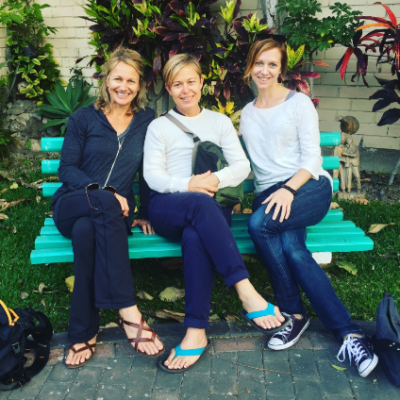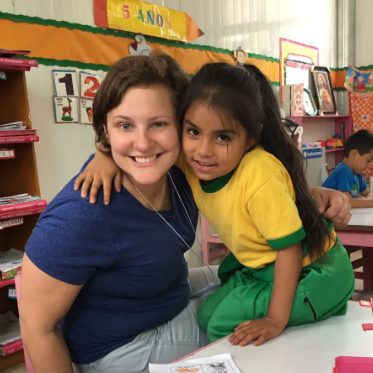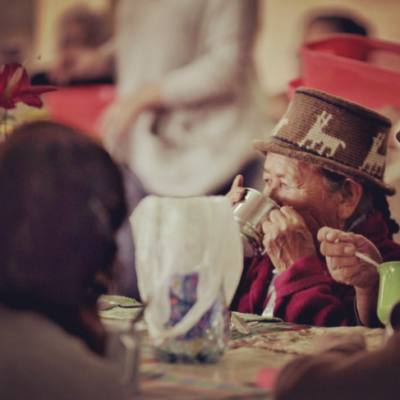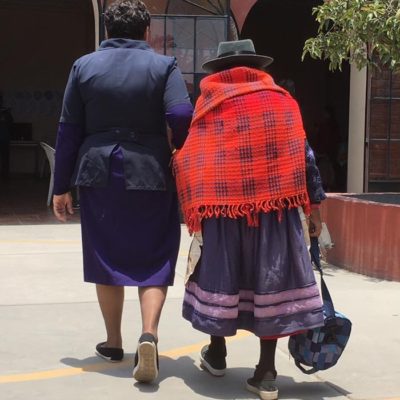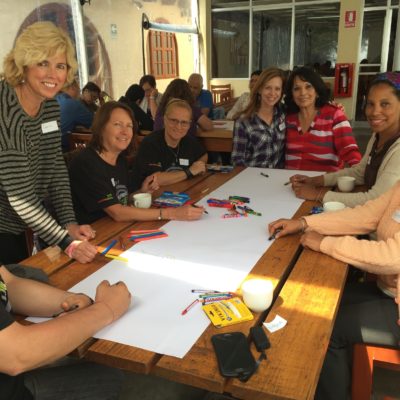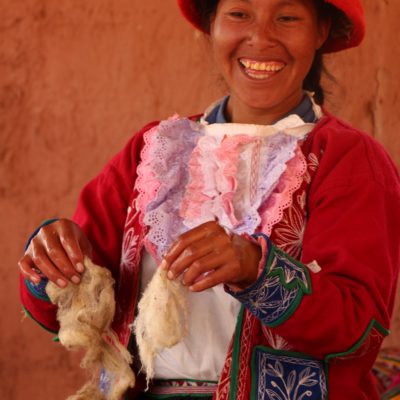
Peru Odyssey: Country
Country
Free Time
Because of the nature of the program and all of the experiences we want to offer, there is limited free time. However, we have built in time for reflection and rest as well as the option during a couple of afternoons/evenings where you can head out shopping/sightseeing and stay out to have a meal on your own or with a smaller group (at your own cost).
In & Around Lima
The neighborhood of Barranco, where we are staying, is filled with traditional 19th century buildings but hosts a very active, bohemian, and youth-oriented nightlife. You can wander the streets to explore the friendly area, and there are numerous restaurant options.
Other areas of interest in Lima:
- Miraflores Tourist District
- El Parque del Amor
- Plaza de Armas/Plaza Mayor/Presidential Palace
- Pachacamac
- Iglesia de San Pedro and catacombs
- Inca Market
- Huaca Pucllana
- Circuito Mágico del Agua (Magic Circuit of Water), whose huge fountains display colorful laser lights show with music every night
Before & After Your Program
- Nazca Lines
- Lake Titicaca
Culture
- Peruvian culture combines Spanish colonial practices with the honor and pride of ancient local cultures and traditions. Most Peruvians are Catholic, with the indigenous people having mixed beliefs of Christianity along with native religions.
- Peruvians are generally considered to be very warm and friendly to strangers. It’s polite to always greet people properly, no matter the nature of your relationship and how long you’ve been acquainted. A simple ‘buenos dias’ when you meet and ‘hasta luego’ when you leave is adequate. People will shake hands upon meeting for the first time, and if already acquainted, men will often pat each other on the back and women will kiss each other on one cheek – always lean to your left for the kiss! If you are a man meeting a woman for the first time, let the woman initiate the first greeting – she may offer her hand or approach for a cheek kiss. If you do not know someone really well or are first meeting them, you should address them by Señor, Señora or Señorita.
- When communicating, hand gestures are often used and the conversation can become very lively and animated. Peruvians will stand close to each other and maintain strong eye contact.
- In cities, people will wear western-style clothing; in the highlands and provinces you will see people (mostly women) still dressing in traditional-style clothing.
- Tipping: While Peruvians rarely tip in restaurants, there is no rule that says you can’t if you’re pleased with the service, and it will be very much appreciated. Taxies aren’t usually tipped, and remember to negotiate the price before you get in the cab. Do tip hotel porters and bagboys at the airport.
Language
The official language of Peru is Spanish. Native people of the Andes often speak a local language called Quechua. You often see Quechua spoken in areas of Lima where Andeans have migrated from the mountains into the city. This is particularly true in the poorer areas where you will volunteer such as Villa El Salvador.
While you will sometimes encounter people who speak English, be prepared to mostly have to get by using Spanish, especially at your volunteer site, and even in restaurants and stores.
Brush up on key phrases, pronouns, and verbs. A great placed to start is a free app for your phone called Duolingo. Start now and do a few short lessons everyday.
Learn numbers (1-20, and tens up to 100) so that you can bargain at the markets!
Another great tip is to watch a movie that you are very familiar with in Spanish. This helps you get a feel for the tone of the language.
Most importantly, many volunteers have found it helpful at their volunteer sites to have flashcards on a ring or necklace with key phrases on them. You can get an example of some from CCS.
Weather
Lima’s climate on the coast is subtropical with very little rainfall, making it one of the driest capitals in the world. The city is mild and warm throughout the year.
November is the beginning of SUMMER in Lima! The average high is around 73 degrees F, and average low around 63 degrees F. However, they say you can experience all four seasons in one day in Lima, so be sure to dress in layers!
For the latest weather in Lima, check here
Andes/Sacred Valley Weekend Weather:
November is the beginning of rainy season in the Andes (Cusco and Sacred Valley). Chances are good that it will rain a bit every day.
Changes in altitude affect the microclimate of the Sacred Valley region. Daily average temperatures in Cusco are quite constant, with an average daily high of approximately 70 degrees F. When you head down into the Urubamba Valley, the temperature will rise noticeably. Cusco receives high levels of ultraviolet radiation from the sun, largely due to its high altitude and relatively low cloud cover. Always apply sunblock while in Cusco and at Machu Picchu, even if it is not a particularly sunny day. At night, lows can dip into the 40’s. Bring layers!
Safety
Your safety is our number one priority at A Fresh Chapter, and we want to ensure you are informed so you can make smart decisions throughout your time in Peru.
When you are traveling to any major city in the world, there is bound to be crime. However from our experience, Lima feels just as safe, if not safer than living in New York City! Here are a few smart traveler tips to keep you & your belongings safe while in Peru.
- Do not take valuables to your volunteer placement. You will not need any money or your cell phone while you are at your placement in the morning. You will not be bringing your camera until near the end of your placement and if/when you do, be sure to carry it in a small bag and leave it on your person when you aren’t using it.
- When heading out, take only the amount of cash you will need for the day or bring along your debit/credit card. We suggest carrying your money in your front pockets or in a purse/bag. Petty theft is the most common form of crime in the city, so just be aware of your surroundings when you’re out and about and don’t flash your money, phone, or camera when walking down the street.
- When you go for a walk or a run, please do not wear your headphones, as this can make you an easy target for petty theft.
Just remember that we will do everything in our power to keep you safe, and as long as you are aware of your surroundings, you are in for a trip of a lifetime!
Smart Traveler Enrollment Program (STEP):
U.S. citizens are encouraged to enroll in the Smart Traveler Enrollment Program (STEP). U.S. citizens without internet access may enroll directly at the nearest U.S. Embassy. By enrolling, U.S. citizens make it easier for the embassy to contact them in case of emergency.
Medical Treatment:
We offer comprehensive medical insurance to all participants. Treatment, if needed, is done by English-speaking doctors and accompanied by A Fresh Chapter representative. All selected participants will receive more specific information and details about coverage.
Currency
- Spending money of $75-$250 per week is suggested, for things like optional activities, snacks or meals out, shopping, etc. These costs vary depending upon the participant (and often, how much shopping they want to do!)
- The currency in Peru is Neuvo Soles. For an up-to-date exchange rate, click here. Currently the exchange rate is about 3.3 Nuevo Soles to 1 Dollar. The currency code for Nuevos Soles is PEN, and the currency symbol is S/.
- It is easiest to access money through ATMs. The most widely accepted cards in Peru are Visa and MasterCard, but Cirrus, Electron, and Maestro cards are also accepted. It’s also beneficial to bring a credit card and some cash. Remember to notify your bank institution or credit card holder in order to tell them that you will be using your card abroad.
- When dining out at a restaurant in Lima, it is customary for the server to bring the credit card machine to your table to swipe your card (this helps to prevent fraud). If they don’t bring the machine to you and try to take your card to the back, you should politely ask them to bring the machine to your table.
- Cash – we suggest bringing only $50-100 in US currency, in case of emergencies. Carry the majority of your money on a debit/credit card. Cards can be easily replaced, but cash cannot.
- You will need Nuevo Soles for things like open air markets and cabs. Make sure you have small bills for negotiating at the markets and paying in exact change! For most other outings, like eating at restaurants or general shopping, you can pay with your debit/credit card.
- Traveler’s checks may be used as a back-up in case of emergency, but it is not recommended to use this as a primary method of accessing money.
- While it is not required, please plan to leave room in your budget for tipping the G Adventures guides and bus drivers (5-10 soles per person, and 30-40 soles for our main guide.)


